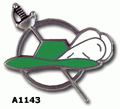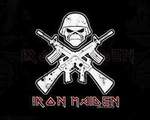|
aramis s ::Ovako nekako

tačno tako, s tim što bi u slučaju da je donji dio kućišta punjenja otvoren izostalo formiranje projektila ili ne bi bilo potpuno kao na slici.
Citat: Munroe effect and close relatives
Franz von Baader, in 1792 or 1799, discovered the process of explosive engraving, but this could not have been explosive forming in the modern sense, because he worked with black gunpowder, the detonation velocity of which is too low for what is generally called the Munroe effect. Engraving with high explosives was done by von Foerster in 1883. Generalized shaped charges, however, were developed independently, in 1888, by Charles E. Munroe of the U.S. Naval Torpedo Station. They were used only in mining, however, until World War II.[1]
In WWII, the effect was used in a variety of antitank and antishipping weapons. The device consists of a cylinder of explosive, which, in the direction the effect is desired, has a conical hollow. If the hollow is lined with metal, the warhead is called "shaped charge", otherwise "hollow charge", although the terms are often interchanged.
Because the explosive force around the cone converges at a specific distance, the standoff between the front of the hollow cone, and the surface of the target, is critical. With typical antitank rockets such as the WWII "Bazooka", this distance is in inches.[2] The technique of flash radiography appeared to have been essential to tuning the implementation.
Citat: Misznay-Schardin effect
As opposed to the cylinder/cone of the Munroe effect, which produces a narrow jet, the critical aspects of this weapon are a relatively large sheet of explosive, with a sturdy metal backing plate. The basic principle is that the main force of the explosion is directed away from the backing plate. The explosive wave, in general, is broader than a Munroe effect, producing a more-or-less flat wave rather than a jet.
If objects of considerable mass, but still less dense that the backing plate, are in front of the "open" side of the explosive, they will be propelled forward by the expanding shock wave. This is the principle in the U.S. M18A1 Claymore mine, which is a book-sized device, with a mildly concave backing plate, a sheet of explosive over it, and metal fragments on the surface of the explosive. Detonating the charge sends a fan-shaped blast and fragmentation pattern in the direction of the target.
Since the wave is straight or diverging, there is no critical standoff requirement as with the converging Munroe effect.
There are reports that devices in Iraq use a sheet to propel a hard metal penetrator into the thinner side plates of tanks and other armored vehicle.
[Link mogu videti samo ulogovani korisnici]
|




















